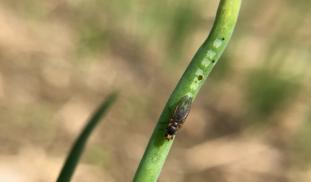Please wait...
About This Project
Allium leafminer (ALM) is an invasive fly that attacks Allium plants (onion, leek, chives, garlic) in the northeastern U.S, that can cause 100% crop loss. Our research goal is to identify potential monitoring tools for early ALM detection for better management of this pest. We will do this by investigating, how ALM responds to visual stimuli in the lab and how visual traps perform in the field. We hypothesize that ALM will respond most to patterned yellow traps installed above the canopy.






